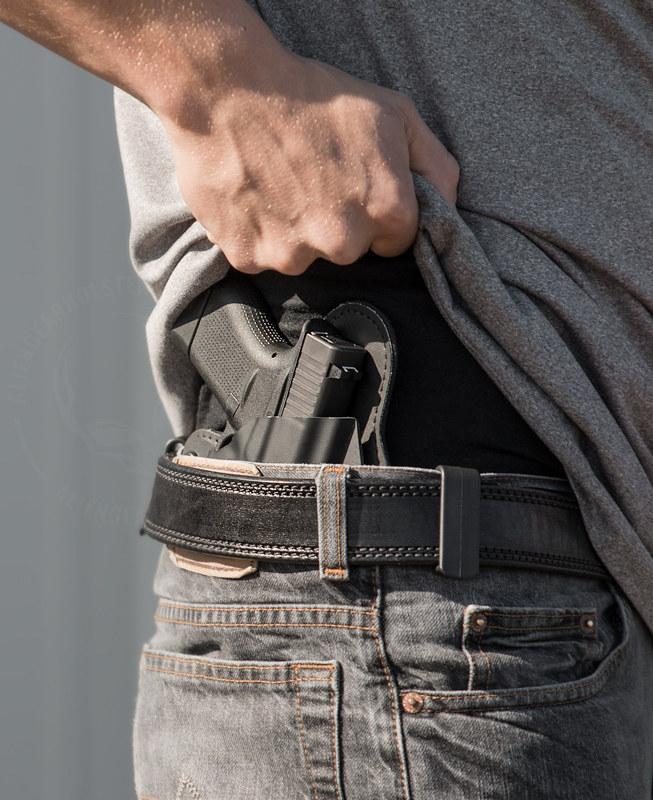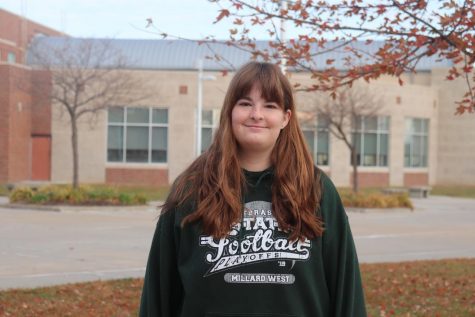Expanding concealed carries won’t guarantee safety
Why Nebraska’s gun laws don’t need a risky change
Copyright © http://aliengearhol
Photo via Flickr. The debate surrounding the second amendment and concealed carry has been heating up with the rise of mass shootings and gun related deaths. Nebraska lawmakers have designated Nebraska as a “Second Amendment sanctuary state,” which reaffirms the state’s support for the right to bear arms. This could mean the state is headed towards more relaxed concealed carry laws, legislation that might do more harm than good.
April 29, 2021
In recent years, the Second Amendment has been the center of political conversation as mass shootings and gun related deaths continue to rise. However, instead of increasing the restrictions on weapons, many states are relaxing their concealed carry laws on the theory that concealed carriers will deter or discourage crime.
When it comes to concealed carry laws, Nebraska is a shall-issue state, meaning citizens are required to meet determinate criteria laid out in the law in order to obtain a license or certificate. There are no requirements for applicants to demonstrate “good cause” before being approved for a license. Applicants have to be 21 years or older in order to obtain a permit and are also required to successfully complete both an eye test and firearm training course before being issued the permit.
In Nebraska, handgun certificates and concealed carry permits are handled at the state level by the State Patrol Department. The process of obtaining a permit isn’t as lengthy and difficult as many believe it is. After paying an application fee of about five dollars, applicants must show proof of residency within both the state and country. After the proper documentation is received, applications, including a background check, only take up to three days to process. Don’t let the speedy system fool you, though. The SPD thoroughly reviews each applicant and their history. This includes criminal and mental health records as well as employment and education.
In the case of self-defense, relaxing concealed carry laws won’t change much. A 2015 Harvard study analyzed data from the National Crime Victimization Surveys and found that self defense gun use is extremely rare, as less than one percent of victims of contact crimes used a gun in self defense. It’s clear victims aren’t using their firearms for protection of self, therefore the argument that expanding concealed carry laws will allow for more citizens to protect themselves and others is inaccurate.
“98 percent of mass shootings happen in gun free areas. The concealed carry personnel should be able to carry their firearms in more places, to protect citizens, considering this statistic”
Mentioned in the opposition, this statistic is widely used by Second Amendment and gun rights activists to defend their point. However, it’s not the most precise statistic. It was most notably used by former President Trump while speaking with the National Rifle Association in May of 2018. Trump was citing a 2014 report for the Crime Prevention Research Center. The report has since been updated as it contained inaccurate or missing information, but the problems with the report don’t end there. The author omits shootings that resulted from gang or drug violence and very clearly writes that he is only referring to “mass public shootings.” This excludes shootings that take place in residential areas and on private property. According to independent research company, Everytown Research & Policy, relatively few mass shootings take place in gun free zones, and 63 percent of mass shootings examined between 2009 and 2016 took place on private property and in residential areas.
Decreasing or getting rid of gun free zones would not reduce the amount of shootings, as it would only be increasing the possession and use of firearms. Guns are not a necessity in areas such as schools, grocery stores and sports arenas, but gun rights activists have created the idea that regular citizens can stop or prevent attacks with a concealed weapon, a notion that, in most cases, is dangerously untrue.
David Hemenway, a professor of health policy at Harvard discussed that the presence of more guns do not make crimes or violent attacks less violent. In fact, they tend to make hostile interactions like robberies and assaults much more deadly. According to the National Research Council, the number of justifiable gun killings by private citizens is very low, and even then, the citizens who are using firearms in defense aren’t effectively preventing crimes. Instead, they’re injuring or killing a criminal after a crime has already been committed. The job of catching or stopping a criminal should be left to trained law enforcement professionals, not private citizens.
Stanford researcher John Donohue found that states who had passed right-to-carry laws experienced 13 to 15 percent higher violent crime rates over a period of ten years in comparison to states who had not passed this legislation. Among several reasons why concealed carry increases violent crime, researchers identified abundant evidence that gun owners feel overly confident about their ability to responsibly use a firearm. This can lead to riskier behavior with outcomes ranging from criminal misconduct to dangerous and harmful accidents, as well as lost or stolen guns. Laws like the right-to-carry laws normalize carrying guns and firearms, making it extra difficult for law enforcement to distinguish between who is and who isn’t legally allowed to possess a firearm in public.
There aren’t many benefits to relaxed concealed carry laws, and with mass shootings and gun related deaths on the rise, it’s hard to see how giving more people access to firearms would ensure the safety and well-being of American citizens.







